#UNISDR
Explore tagged Tumblr posts
Text
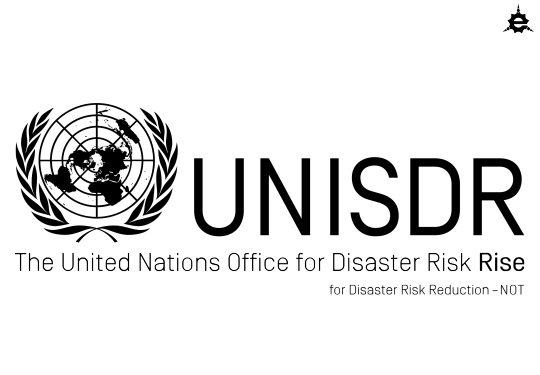
The United Nations Office for Disaster Risk Rise
0 notes
Text
early Warning Signs of natural Disasters
Frühwarnsignale vor Naturkatastrophen
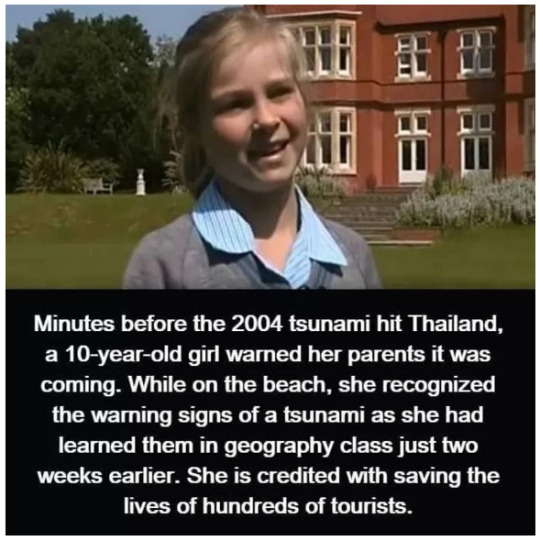
youtube
youtube.com/watch?v=1ebYnhFckQk
youtube
youtube.com/watch?v=RT3-KKP_h2o
youtube
youtube.com/watch?v=zovwL06-gQs
youtube
youtube.com/watch?v=os8iJQUzt-c
br.de/mediathek/podcast/iq-wissenschaft-und-forschung/tsunami-2004-wie-tiere-eine-insel-vor-der-katastrophe-gerettet-haben/2101270
welthungerhilfe.org/news/latest-articles/into-the-mountains-if-the-earth-trembles-three-times/
welthungerhilfe.de/aktuelles/blog/tsunami-2004-in-simeulue-retteten-sich-80000/
futura-sciences.com/planete/actualites/tradition-secret-ile-survecu-presque-intacte-tsunami-2004-plus-meurtrier-histoire-118485/
youtube
youtube.com/watch?v=V0s2i7Cc7wA
tumblr.com/unisdr/149029949489/tilly-smith-in-disasters-lessons-save-lives
t-online.de/nachrichten/panorama/menschen-schicksale/id_100554360/tsunami-2004-kind-rettete-mehr-als-100-menschen.html
#tsunami#tsunamis#Erdbeben#earthquakes#earthquake#early warning signs#warning signs#Frühwarnsignale#Warnsignale#Anzeichen#Sensibilität#sensibel#Vulkanausbrüche#vulcanic eruptions#warning sign#Warnsignal#Frühwarnsignal#early warning sign#Achtsamkeit#achtsam#awareness#aware#Tilly Smith#Simeulue#receding water#zurückweichendes Wasser#unruhiges Wasser#sich zurückziehendes Wasser#boiling Sea#kochende See
1 note
·
View note
Text
Is your community prepared?: Community Involvement in Disaster Risk Reduction and Management
As someone living in one of the communities that make up one of the vast metropolises that continue to thrive economically, Quezon City deems urban resilience a vital aspect and social and economic concern in strengthening the city’s resilience. Where families and households are strong enough to withstand calamities and are also able to restore economic activity amidst the myriad of disasters.
To better visualize the overall purpose of this blog post, I would like to first share the economic and environmental issues the Philippines is currently facing.
Due to the geographic and physical features and location of the country, it is considered to be one most disaster-prone countries in the world. Situated along the western segment of the Pacific Ring of Fire, it lies in one of the most active part of the Earth characterized by an ocean encircling belt of active volcanoes and earthquake generators. Together with twenty-two (22) active volcanoes and six (6) known fault lines, the Philippines also sits astride the typhoon belt. The major part of the country experiences annual torrential rains and thunderstorms from July to October, with about nineteen (19) typhoons entering the country’s area of responsibility in a year with eight (8) to nine (9) of them making landfall on the country’s soil. This does not only make the Philippines vulnerable to flooding, but also vulnerable to climate change.
Sea level rise is one of the best-known climate change’s many dangers. As humanity pollutes the atmosphere with toxic substances that destroys the atmosphere, the planet becomes warmer and warmer. Thus, ice sheets and glaciers melt and warming sea water expands and increases in volume of the world’s oceans. The pollution and continuous onslaught of environmentally-detrimental human activities has become one of the top contributors to this growing concern. Especially in urban areas like Metro Manila, one of the most obvious human activity that sets the ground for environmental degradation is poor waste management. Improper wastes disposal, inefficient waste collection, lack of disposal facilities and the sheer loss of basic human decency and discipline has resulted in becoming one of the greatest threats to country’s environment and public health.
After hearing all these things, what can we do? Well, as of course in true Filipino fashion. We overcome. In our classes in Disaster Risk Reduction Management (DRRM), the term “Resilient”, Filipino or English, is a source of contention and controversy. While resilience is a noble word, it is also subject to scrutiny as to what does it mean to the country’s ability to bring back the sense of normalcy and improving itself. It shouldn’t simply mean smiling whilst standing knee-deep in floods or accepting the fact that our country’s legal justice system will always be something out of a dystopian novel, or even going far back as to think, “well, if it’s not broken, don’t fix it” to the state of our transportation system. UNISDR (United Nations Office for Disaster Risk Reduction) defines resilience as “the use of recovery, rehabilitation, and reconstruction phases after a disaster to increase ‘resilience’ of nations and communities through integrating DRR measures into the restoration of physical infra and societal systems, and into revitalization of livelihoods, economies, and the environment.” In other words, we learn from the events for us to be “more resilient.” For us to improve. And how can we do that? We start in our most basic unit of society, the family, then to the community.
To take a closer look to the one the communities preparing for such disasters, I went to visit my local barangay, Barangay Bagumbuhay.
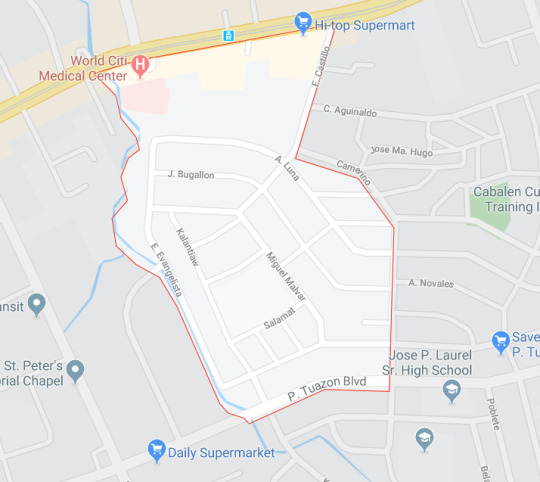
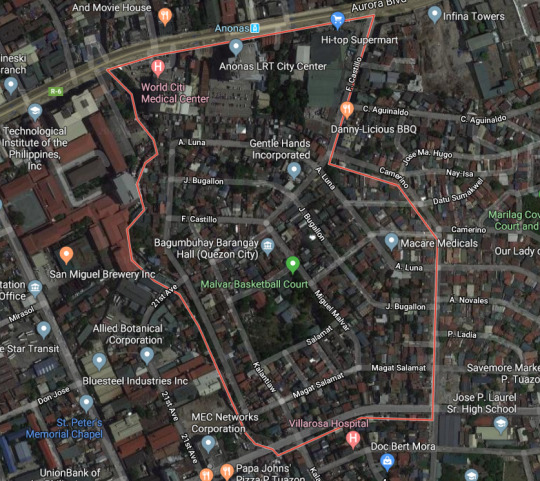
Barangay Bagumbuhay’s hall is right along the residential area of Miguel Malvar Street. Easily accessible by the Light Railway Transit (LRT) System (though it is currently closed for operations) or by jeeps coming from Cubao or Katipunan, going through Aurora boulevard.
Due to the location of the barangay, not a lot of natural hazards were identified. According to PHILVOC’s faultfinder, the barangay is approximately 1.6 km. from the nearest active fault trace, which is the West Valley Fault.
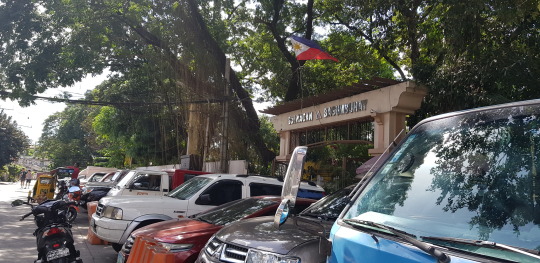
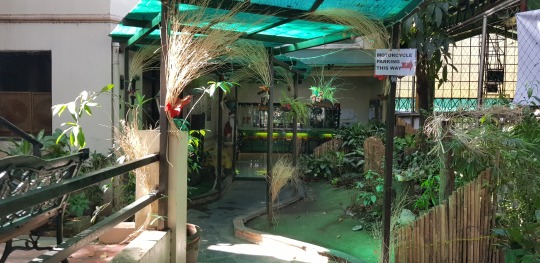
The barangay also had an advantage of being located right on top of a hill-like landmass, giving it the ability to rule out severe cases of flooding. However, there were still hazards to the community that were present. Namely, Anthropogenic hazards which were the structures and residential areas that were violating building code. Particularly the residential areas that were built atop the creek along F. Castillo Street. The officials fear that if these structures weren’t fixed immediately, they may become a danger to the residents should an offshoot of a disaster happened (e.g. fires). Blocked roads and alleys were also a danger since they served as a blockage to the entry and exit of residents to and from their homes, making it difficult for them to move through.
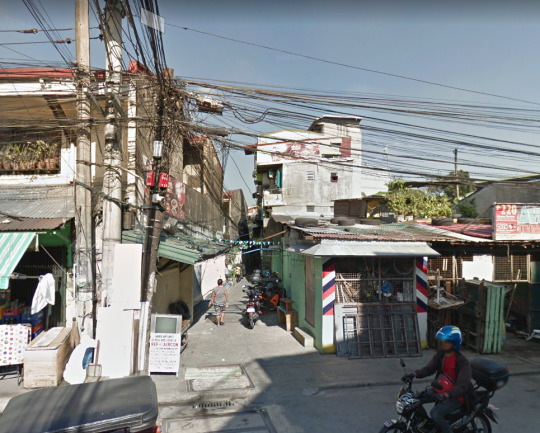
The officer in charge of the Disaster Risk Reduction and Management office of barangay Bagumbuhay, Estiño Martinez, introduced me to the various DRRM plans they had prepared in case the community faced a disaster. There were plans of evacuation locations for the nearby residents as well of those people who need special care and attention. Sr. Martinez provided a list of projects that had already been done and to be done (for 2020) in order to fulfill their duty of reducing the risk of any hazards that pose a threat to the community.
Sr. Martinez accompanied us in viewing the various preparations the had in store. For medical emergencies, for fire accidents, as well as for the aftermath of any disaster.
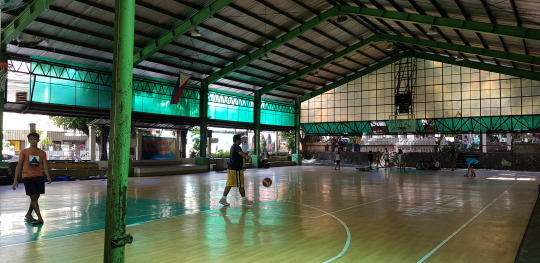
The multipurpose court to be used as an evacuation center for the community.
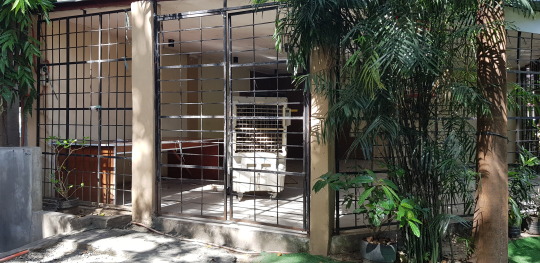
A funeral parlor and holding area for the families who are cannot afford the expenses of having a proper burial for their family member.
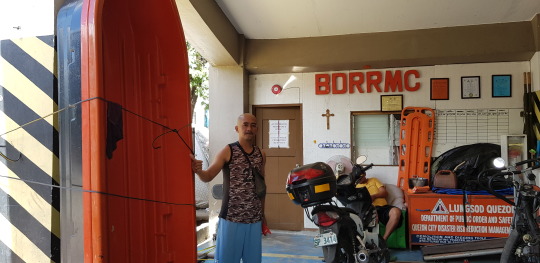
A Barangay Disaster Risk Reduction and Management Center right behind the hall. This includes the various materials and equipment to be used if in case of an emergency.
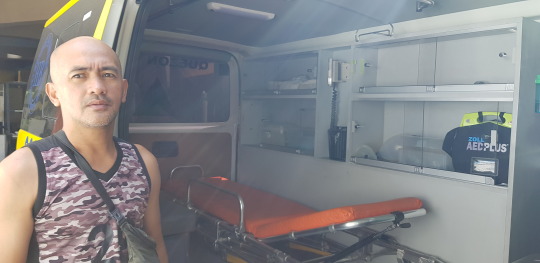
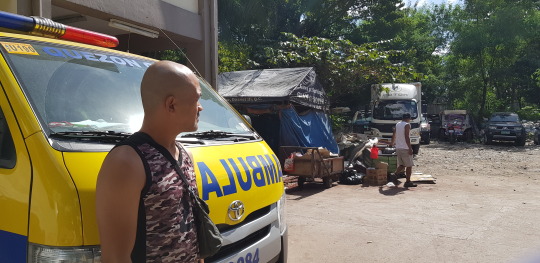
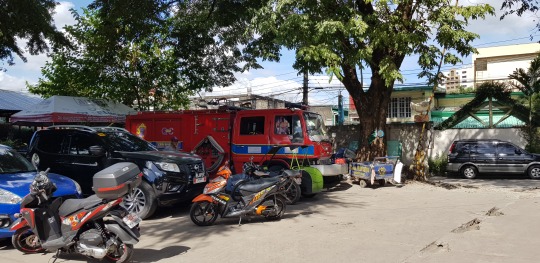
The fully-equipped ambulance and fire truck on stand-by 24-7. Sir. Martinez also informed us that the people manning these vehicles were always on site. He told us that they had shiftings in place for these positions as to prevent lacking important personnel if and when needed.
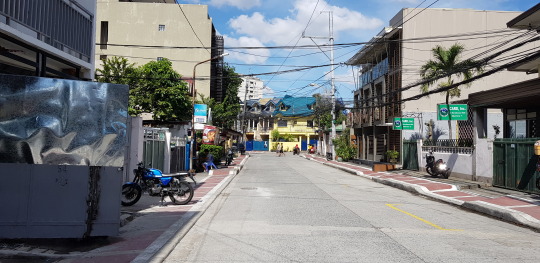
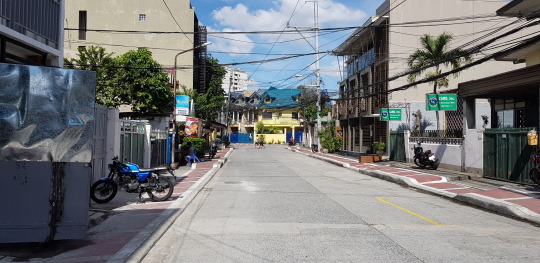
The barangay council also set forth a clearing operation for the entire Miguel Malvar Street. This was to prevent blockage or traffic for the emergency vehicles going in and out of the barangay hall area.
When I asked about the issues that the barangay faced in implementing their plans, he told us how sometimes there were residents who refused to take part in an operation they called Ugnayan. This system allowed residents to be informed of the basic and immediate reparations should a disaster ever happen. Seminars and workshops going on in the barangay is also openly given and provided to the residents. Sr. Martinez explained to us how participation of all the individual members of the community is what will ultimately help the community, not just the barangay personnel. The interview was then abruptly cut due to the schedules Sir. Martinez had.
Though our time was short, he was able to answer all my questions and expound on his answers in a concise manner. I am extremely grateful to Sir Martinez for giving me his time in answering all my questions.
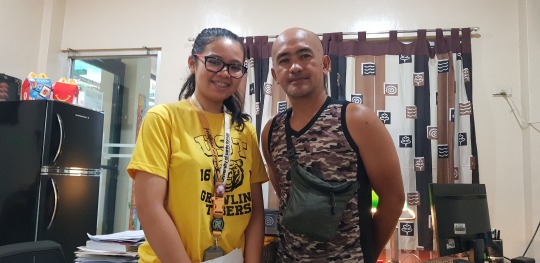
The interview led me to many conclusions about how vital it is for a community to be prepared for such disasters. In case of any disaster or emergency, before any government relief & support reaches or outside help is utilized, it is the Community which has to respond immediately (at the hour). As the Community plays the role of First Responder, it is critical that there is adequate awareness and preparedness at the Community level especially among the most vulnerable set of communities residing in the most vulnerable areas.
Disaster preparedness provides a platform to organize effective, realistic and coordinated planning, reduces the waste of efforts and increase the overall effectiveness of the individual, household and community members disaster preparedness and response efforts. Disaster preparedness activities that are planned with risk reduction measures can prevent disaster situations and also result in saving maximum lives and livelihoods during any disaster situation, enabling the affected community to easily get back on its feet within a short period of time. Community preparedness can be thought of as the advance capacity of a community to respond to the consequences of an adverse event by having plans in place so that people know what to do and where to go if a warning is issued or a hazard is observed.
What we plan with our families, our community, and in our country helps us consider our emergency response activities in light of existing and new disaster risks that is affecting us and our country. This allows us to design or adjust our activities so that people and communities and in the end, our country to become safer and more disaster-resilient, as well as safeguarding efforts to create and expand enabling conditions for sustainable poverty alleviation and development. This can help strengthen our communities and reduce our vulnerability to the multiple natural disasters heading our way.
The best way we can do to help our community and our country is to raise awareness. People being informed and equipped with the right knowledge will go a very long way. Just as the saying goes, it is better to know it and not need it than to need it and not know it.
We as a community must urge our those we have elected to government positions to quickly move in planning and developing projects that will protect the public. We must build resilience in ourselves and also in the systems of our society. We must approach climate change with fear, for what our children’s future will be, and courage and hope, that we can heal what has been done.
To our public officials, they must create and support national policies and strategies allocating the resources of the country to manage the risk threatening it. Everyone must help in pushing for change and improvement in access to quality primary health care even before disaster strikes.
To our workforce, we must be trained and equipped in planning for all types of emergencies. We need to be able to identify hazards, vulnerabilities, and our own capacities to lessen risks.
To the public, we as collective need to promote risk awareness of emergencies as well as providing health education to the youth. There is so much we can do when we join together for a cause that will protect us and our families.
True “resilience”, I believe, is not tolerance or ignorance of the system that is broken in the front of adversity. It is the triumphant improvement of ourselves, physically and socially to become better. A better Filipino nation that faces calamities not in a defeatist manner but with a strength of Filipinos coming together.
#text#text post#nstp#literary training service#barangay#disaster risk reduction and management#drrm#philippines#blog post
6 notes
·
View notes
Text
UN Job in Japan, STAFF ASSISTANT, G5 - UNISDR VA#109701-PO
UN Job in Japan, STAFF ASSISTANT, G5 – UNISDR VA#109701-PO
UN Job in Japan STAFF ASSISTANT, G5
Duty Station: KOBE, JAPAN Posting Period: 17 January 2019 – 15 February 2019
Job Description | APPLY
Like and Follow us on
Facebook Twitter Google-plus Instagram
Share it with your friends
Share on facebook Share on twitter Share on linkedin Share on google Share on whatsapp Share on email
Subscribe to our Newsletter
Subscribe
View On WordPress
#Japan#Japan Jobs#Jobs for Japanese#Jobs in Japan#Jobs in Kobe#Kobe#Staff Assistant#UN#UN Japan#UN Job Openings#UN Jobs#UN Vacancies#UNISDR
0 notes
Photo

#unisdr Dia Internacional para prevenir riesgo ante desastres. #paispreparado #vivirparacontarlo #porquereducirriesgossalvavidas https://www.instagram.com/p/Bo4PCa9A0gnkMfWeobSFb6xb0BJRtqxOCUulHU0/?utm_source=ig_tumblr_share&igshid=p9s0vjumwml9
0 notes
Text
Portugal Resmikan Pusat Peringatan Tsunami
Portugal Resmikan Pusat Peringatan Tsunami
JENEWA – Portugal secara resmi akan membuka Pusat Peringatan Tsunami Nasional pada 21 November mendatang. Fasilitas tersebut akan memperluas kemampuan Eropa untuk mengeluarkan peringatan tsunami kepada rakyatnya.
“Pusat tersebut akan memantau sebuah wilayah yang pernah dilanda gempa bumi kuat dan diikuti dengan tsunami hebat hingga menghancurkan Lisabon pada 1755,” ungkap Kantor Urusan Penurunan…
View On WordPress
0 notes
Text
New online resource provides comprehensive information on climate risk insurance
New online resource provides comprehensive information on climate risk insurance
Geneva/Bonn – On the International Day for Disaster Risk Reduction, the first-ever online database on climate risk insurance is being launched by the Global Index Insurance Facility (GIIF), the Munich Climate Insurance Initiative (MCII), and the Deutsche Gesellschaft für Internationale Zusammenarbeit (GIZ) GmbH, commissioned by the German Government. The Climate Insurance database shares the…
View On WordPress
0 notes
Photo

October 13 is International Day for Disaster Reduction: The International Day for Disaster Reduction was started in 1989, after a call by the United Nations General Assembly for a day to promote a global culture of risk-awareness and disaster reduction. #IDDR2017 #InternationalDayforDisasterReduction #IDDR #IDDR17 #IDDR #DisasterReductionDay #DayForDisasterReduction #ADB #UNISDR #UNO #UnitedNations #October13 #Disaster #Calamity #DisasterReduction #Risk #resilience #sustainability #climatechange #swich2sendai #tsunami #ClimateAction #undp
#disasterreductionday#undp#unisdr#iddr17#risk#dayfordisasterreduction#iddr2017#resilience#unitednations#disaster#swich2sendai#sustainability#calamity#iddr#climatechange#tsunami#october13#internationaldayfordisasterreduction#disasterreduction#adb#uno#climateaction
0 notes
Text
How ready is your Barangay?
DRRM Kwentuhan
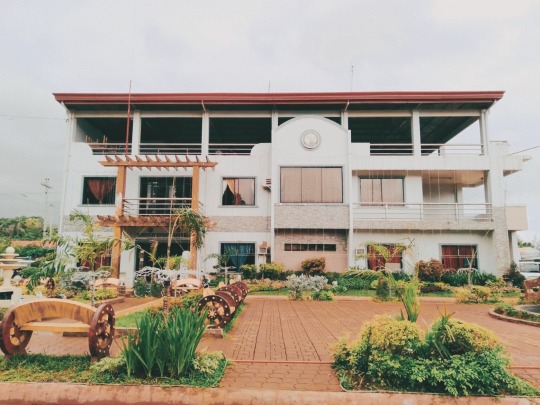
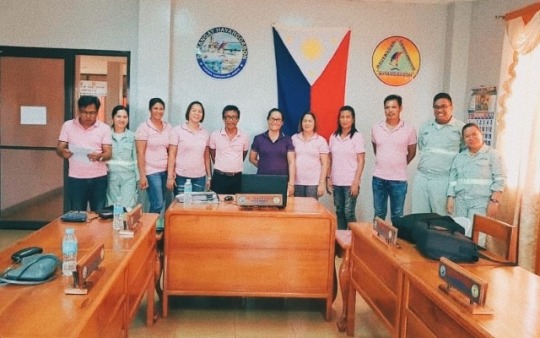
Hazard
A hazard is a process, phenomenon or human activity that may cause loss of life, injury or other health impacts, property damage, social and economic disruption or environmental degradation. Hazards may be natural, anthropogenic or socionatural in origin (UNISDR, 2016).
In a small barangay of Hayanggabon, Claver, Surigao Del Norte, where I conducted my interview with the Chairman of their BDRRM (Barangay Disaster Risk Reduction Management) which is also the Barangay Captain, Mrs. Tresa Placencia, I was able to learn the preparations and how ready the barangay is in times of calamities and disasters.
Barangay Hayanggabon is consist of 9 Puroks (wards), which are Purok 1 Seaside, Purok 1 Hillside, and Puroks 2-8 with the total population of 3,497. The Barangay is an area surrounded by oceans and Hills so therefore it is really at a high-risk when natural disaster occurs. The Barangay faces a lot of hazards or calamities such as typhoons that happens twice or trice a year, earthquakes that happens frequently, landslides during typhoons and heavy rains, floods and even forest fires, happened in years 2004 and 2009 as mentioned by the Barangay Captain.
During disasters such as typhoon, storm surge and tsunami, the most affected areas of the barangay is the coastal residence, especially puroks 1 seaside, 2, 3 and 4 because these puroks are near the ocean and the houses around these areas are made up of light materials, so the BDRRM really focuses around the mentioned areas for the safety of people. But the question is, how ready are they in times of calamities? According to Brgy. Capt. Tresa Placencia, the Barangay has 22 Million budget in a year and 5% of it is allocated for Calamity Funds or DRRM Funds. They used the budget to build an evacuation center with a complete DRR Emergency Supplies, Medical Supplies and evacuation center supplies and materials for the safety of everyone and also a capability building or training seminars on mainstreaming disaster risk reduction and mangament. The Barangay has a 5 year plan. They conducted a survey to identify the areas that is prone to typhoon, storm surge and tsunami for them to identify also the people that needs to evacuate in case of emergency, series of meetings to the BDRRM Council to make plans and preparations before, during and after the disaster, series of meetings for the officials of every purok such as the Information Education Campain (IEC) to implement preventive evacuation to avoid loss of lives, especially the elderlies, children and the disabled ones. They also have evacuation route map provided in every purok in case of calamities and programs such as Food For Work Program and Livelihood Programs.
Above all, how would they know if disaster is approaching them? Aside from watching the daily weather forecast for the weather, locals believed in the so called myths that a heavy rain, storm surge or typhoon is coming if the moon becomes brighter than usual or the halo is really visible and if there's only few stars at night. Another thing is that, whenever the animals are starting to act strange, there might be an earthquake coming. Whether it's true or not, locals are fully aware of their roles and the things that they must do or not to do in times of calamities, because the BDRRM Council with the help of Barangay Tanods and Barangay Health Center Workers are really hands-on towards the safety of everyone in Barangay.
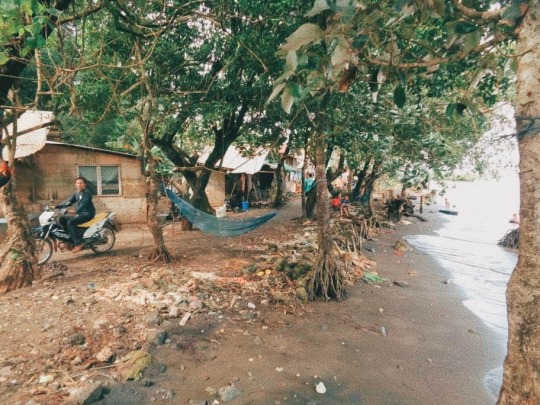
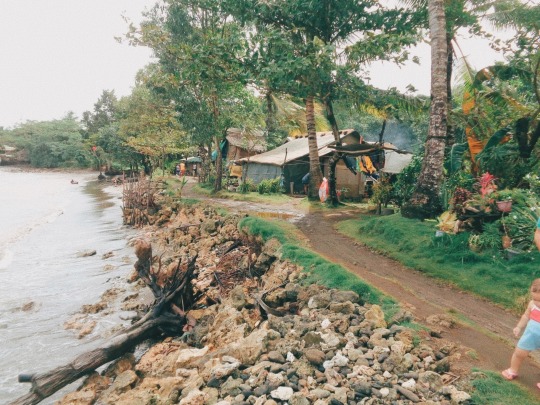
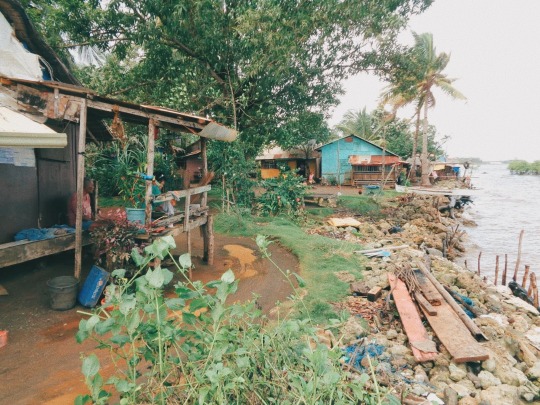
These pictures are the parts of barangay that experiences a huge damage in times of calamities since it is near the ocean, the waves sometimes reach the households and there's a possibility that it might get destroy since most of the houses are made up of light materials. The problem is, even though the people experiences such danger, the still continue to live in such places because of poverty.
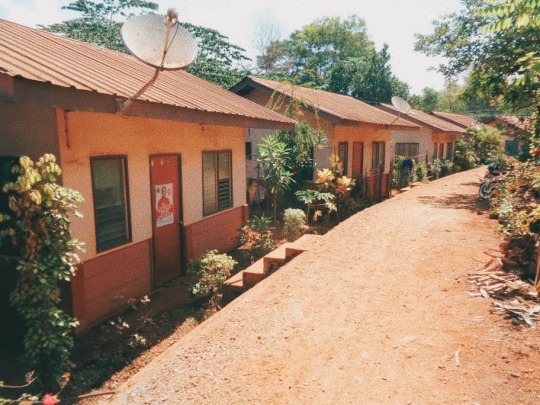

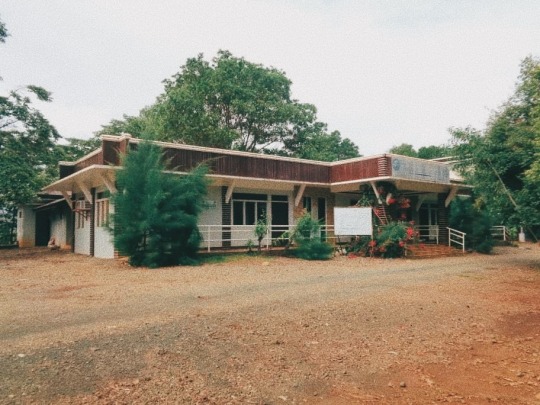
On the other side, these pictures are the safest part of the barangay, which is the Housing Project of the barangay council. It is located at the "PATAG" part of the barangay and the houses are build with strong materials. And aside from that, the evacuation center is also located around the area so it is more accessible and beneficial for the people that lives in this part of barangay.
We can't stop the calamities and such danger from arising but we can prevent our self or someone from getting hurt. As for Baranggay Hayanggabon, they are confident that they can survive any calamities without getting hurt because they've great practices like; Clean-Up Drive every 2nd and 4th Saturday of the Month, they also provide DRRM Trainings like the Basic Life Support Training and seminars for the Barangay tanods, officials and purok officers in case of emergency, conducted an Earthquake and Fire drills and last but not the least they have the best medical team lead by Dr. Chrismar Mocorro, they provide health services such as Vaccines, regular check-ups for the senior citizens and providing people with medicines.
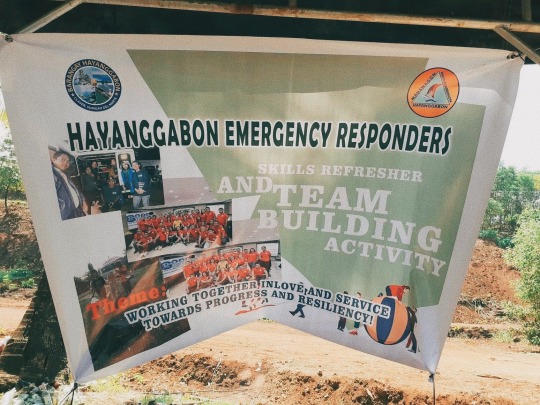
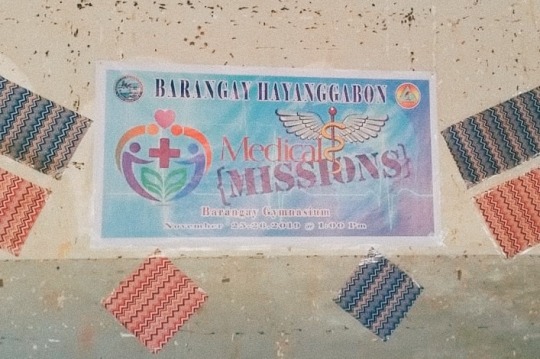
As a Filipino, we have experienced a lot of disasters, and by conducting my interview, I have realized that we should take very seriously the activities such as earthquake and fire drills because it is only for our safety. I believe that the government did its very best to protect us and we should also cooperate with them.
2 notes
·
View notes
Text
𝐀𝐑𝐂𝐀𝐍𝐄 𝐁𝐑𝐈𝐃𝐆𝐄 / 𝐇𝐄𝐀𝐃𝐂𝐀𝐍𝐎𝐍𝐒 : 𝐭𝐡𝐞 𝐫𝐞𝐦𝐚𝐢𝐧𝐢𝐧𝐠 𝐨𝐫𝐠𝐚𝐧𝐢𝐳𝐚𝐭𝐢𝐨𝐧𝐬 𝐢𝐧 𝐭𝐡𝐞 𝐰𝐨𝐫𝐥𝐝.
following the rapture rain in 2019, and the fallout that comes right after, one of the many catastrophic events are the fall of several governments and organizations worldwide. these falls have caused massive power vacuums in many countries, worsened only by the riots of the masses. here are some of the organizations that remains, held only by a few people:
THE UNITED NATIONS : the first organisation that was kept safe following the first disappearances after the rapture rain. although they are doing their best to keep themselves intact, the united nations is not free from damage. some countries have lost their most powerful leaders. some countries can only send a trustworthy spokesperson. some countries sent no one at all, either they have given up on world peace or have succumbed into anarchy. here are some of the world superpowers that still remains: THE UNITED STATES, RUSSIA, CHINA, JAPAN, FRANCE, AUSTRALIA, BRAZIL, GERMANY, ITALY, and INDIA.
THE INTERNATIONAL FEDERATION OF RED CROSS AND RED CRESCENT SOCIETIES : they are only present in some countries, but they are still one of the more active organisations worldwide. they’re main goal following the rapture is to provide immediate help and assistance with the aim of keeping the world sane in these trying times. other than providing help to the injured and ill, they also provide psychological support to the remaining survivors.
THE UNITED NATIONS INTERNATIONAL STRATEGY FOR DISASTER REDUCTION : the main organization when it comes to reducing the effects of the disaster both during and after the disappearances. like many of the organizations, they are heavily affected after they have lost a large part of their troops. they are still continuing in their purpose, though, deploying troops all over the world.
FEDERAL EMERGENCY MANAGEMENT AGENCY : though their numbers have been severely damaged by the rapture, they still expanded their operations by sending volunteers to countries in need. their main purpose in to respond and assess the damages made by disasters that happen after the disappearances. they’re the unisdr’s additional forces.
THE INTERNATIONAL SPACE STATION : following the rapture, the iss has been given a new mission: to understand the rapture in a low earth orbit standpoint. this additional purpose is a shot in the dark, since the connection of the event to the disappearances is still considered a far fetched theory.
THE WORLD METEOROLOGICAL ORGANIZATION : currently one of the most important organizations of the world, tasked to study and understand the possibility of another rapture by understanding weather patterns. they’re purpose is also a shot in the dark but they are the world’s best chance to understand and prevent or warn people of another reckoning.
#v : arcane bridge#hello look at this#i will also be making some memes and will appreciate some suggestions :)#anyway feel free to reblog this if u want#im writing another hc post as well but its ................ hella long
4 notes
·
View notes
Photo




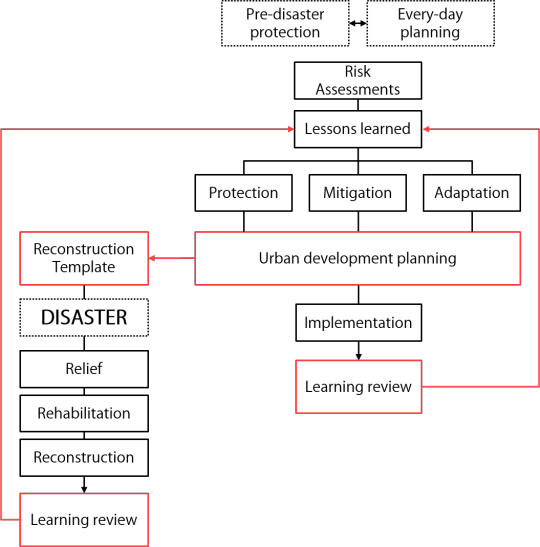



preADJUST
https://elib.uni-stuttgart.de/handle/11682/11761
Natural hazards, including climatological, meteorological, hydrological, and geophysical hazards can have a devastating impact on human life, the built environment, urban development, and economy. A lack of money and resources, inadequate planning laws and regulations as well as a lack of effective monitoring strategies, are reasons why people in developing countries are particularly vulnerable to the impact of natural hazards. In many cases, there is a lack of information and knowledge about what can be done to appropriately adjust housing, comprising the immediate physical environment, both within and outside of buildings where people live, and which serve as a shelter from external influences. The present thesis investigates the need for pre-disaster housing adjustment strategies as a necessary contribution of urban development planning at a local level. This was achieved through systematic interviews and field studies in the post disaster study area Banda Aceh, Indonesia. Two instruments for pre-disaster planning are introduced: ‘Proactive urban development planning as pre-disaster protection’, a systematic risk management approach, before a disaster strikes as part of the everyday planning process; and a ‘reconstruction template’ to prepare for the worst-case scenario. With these two instruments, not only the quality of reconstruction projects can be improved but, in long-term urban development planning, housing can be adjusted to natural hazards. This approach is based on the UNISDR (United Nations International Strategy for Disaster Risk Reduction) Sendai framework for Disaster Risk Reduction 2015-2030 and forms a bridge between post-disaster reconstruction and long-lasting urban development.
0 notes
Text
Organized and hosted by the Global Risk Forum The International Disaster and Risk Conference IDRC is a global gathering of experts for risk reduction, disaster management, and climate change adaptation. IDRCs are held as a biennial conference in Davos, Switzerland and complemented every other year with regional conferences hosted in different regions of the world and endorse the UNISDR Global Platform meetings (GP in 2007, 2009, 2011, 2013, and 2015). The IDRC conferences promote an integral risk management approach – across subject areas, professions, and sectors – encompassing scientific understanding with business, policy responses, the media and citizen participation. The IDRCs encourage stronger ties with adequate public–private partnership models and devising approaches for moving towards a more integrative way of thinking about disaster and risks. Additional conferences and workshops dealing with specific disaster and risk topics may be organized in Davos or elsewhere. The conferences and workshops aim to provide solutions for effective and efficient global disaster and risk management and climate change adaptation. These issues need the involvement of all stakeholders of the public and the private sector. Originally organized by the Swiss Federal Research Institute WSL, since 2007 IDRCs are organised by the Global Risk Forum GRF Davos. Patronage of IDRC include the Swiss Agency for Development and Cooperation SDC, UN organisations such as UNESCO, UN ISDR, UNDP, UNEP and ILO as well as the private sector like SWISS RE. IDRC conferences and workshops contribute to harmonizing risk reduction and disaster management with climate change adaptation measures. The IDRC Conferences provide an ideal platform for assessment and dissemination activities, as well as for networking activities. The next IDRC conference will be held from 28 August to 1 September 2014 in Davos, Switzerland.
0 notes
Text
UNISDR-Nairobi -Administration-103037-PO
UNISDR Job ADMINISTRATIVE ASSISTANT, G5
Duty Station: NAIROBI, KENYA Posting Period: 13 September 2018 – 12 October 2018
Job Description | APPLY
View On WordPress
#Jobs in Nairobi#UN Job#UN Job Opening#UN Jobs in Kenya#UN Jobs in Nairobi#UN Vacancies#UNISDR#UNISDR Job#UNISDR Nairobi
0 notes
Text
Did Super Typhoon Ondoy (Ketsana) Expose the Philippines as a Vulnerable Country to Disasters?
Did Super Typhoon Ondoy (Ketsana) Expose the Philippines as a Vulnerable Country to Disasters?

The Center for Research and Epidemiology Disasters (CRED) ranked the Philippines as one of most disaster-prone countries in the world. The Philippines is also fourth in the world among countries hit by the highest number of disasters over the past 20 years, according to the United Nations Office for Disaster Risk Reduction (UNISDR). In terms of tropical storms, the country is visited by an…
View On WordPress
2 notes
·
View notes
Text
Beyond the University Walls: Risk and disaster management and the role of universities in Brazil
According to the United Nations Office for Disaster Risk Reduction (CRED / UNISDR, 2015), between 1995 and 2015 more than 51 million people were affected and harmed by natural disasters in Brazil. In the same period, more than 1,800,000 homes were damaged and 180,000 destroyed, in addition to losses caused in agriculture, livestock, industry and services, which exceed R$ 182.8 billion (UFSC, 2016). In 10 years, from 2006 to 2016, the Integrated Disaster Information System accounted 23,037 municipalities in Emergency Situations and 173 in States of Public Calamity, in addition to situations not identified by the National Secretariat for Civil Defense and Protection.
The presence of these events in cities shows the strong relationship between human activities in the territory - including changes in their natural characteristics of climate and vegetation - and how they can potentiate the occurrences of disasters, through an intense process of urbanization and disorderly occupation, combined with inefficient planning and prevention actions by the State. In addition, the vulnerability to these events also involves power relations and social and economic issues present in the territory, exposing certain areas and populations to greater chances of risks and selectively affecting certain sectors of society.
The characteristics of disaster events in Brazil and their risk and response management are peculiar to the country's federative structure. Many times materializing in a small and local territorial extension, the necessity to mitigate the results of disasters finds the most fragile and technically unprepared entities for their management: the municipalities. In cases of extreme events, the numerous responsibilities related to the aid and assistance to those affected and the restoration of public infrastructure conflict with municipal state capacities (IBGE, 2013), also highlighting the few existing cases of regional integration of joint actions in these cases. It is estimated that 48% of Brazilian municipalities do not have any planning instrument that includes the prevention, reduction and management of risks and disasters. (IBGE, 2014).
The network of actors involved in risk management actions became more complex after an international movement towards a paradigm shift in the area of disasters since the 2000s, changing the exclusive focus on response and migrating to the construction of a culture of prevention and resilience. Between 1980 and 2009, it is estimated that 90 billion dollars have been spent on disaster assistance worldwide, but only 3.6% of this amount being invested in prevention and preparedness initiatives (UNISRD, 2015). In 1999, the United Nations Office for Disaster Risk Reduction (UNISDR / UN) is founded on the principle that an extreme event cannot be prevented from happening, but efforts can be made to prevent it from becoming a disaster and mitigate its impact.
In 2002, the General Assembly of the United Nations proclaimed the so-called United Nations Decade of Education for Sustainable Development, structuring a network of responsibilities involving governments and other sectors of society aimed at promoting a sustainable life. In 2005, the World Conference on Disaster Reduction listed as a priority the promotion of dialogue and cooperation between the scientific community, public managers and stakeholders for the development of research in the area and the incorporation of these contributions in local and regional decision making. In addition, they indicated the inclusion of knowledge for disaster risk reduction in the school curriculum and encouraged practical learning and training activities.
The Third UN World Conference on Disaster Risk Reduction reinforced the importance of the interface between science and public policies, reiterating the role of the scientific community and research entities for the study of risk factors and disasters and their local, regional and national application (UNISDR, 2015).
The paradigm shift from a response culture to a prevention culture opened up the possibility of a more active role for teaching and research institutions in the subsystem, the ‘epistemic communities’, becoming a strategic partner capable of supporting government decisions in structuring its policies to reduce risks to disasters, to guarantee public managers a closer look at their reality, to carry out projects that require capacity and technical knowledge, and to develop and disseminate knowledge on the subject to society, contributing to a prevention culture.
In the same context of legal advances and the maturation of the new, specialized groups for its study were instituted in Brazilian public universities, as in the year 2000 with the creation of the Center for Studies and Research in Engineering and Civil Defense of Federal University of Santa Catarina (CEPED UFSC); in 2009 with the creation of the University Center for Studies and Research on Disasters of the Federal University of Rio Grande do Sul (CEPED / RS); in 2013 with the creation of the University Center for Studies and Research on Disasters, linked to the State University of Paraná (Unespar) (CEPED / PR); and the Center for Studies and Research on Disasters in São Paulo, linked to the University of São Paulo (USP), among others.
The complexity and multi-causality of problems in contemporary societies indicate the necessity for inclusive participation by different actors in their dynamics. We live in a risky society, where cooperation and joint work are decisive for solving problems. The reflections contained in this work serve to indicate new horizons and possibilities on the role of the Brazilian scientific community in the construction of public policies. Public universities, as state and federal autarchies, have a strategic potential still little explored, with the capacity to build technical knowledge that assist managers in their decisions, bring innovations to processes and new perspectives, not only in articulation with the public sector, but with other partner educational institutions, civil society organizations, the community and the media. The public resources invested in its maintenance need to be rewarded by the transfer of this knowledge beyond the walls of the university, in order to improve the quality of life of the population.
The expansion of this role in risk and disaster management in Brazil involves the creation of more efficient mechanisms under current legislation that encourage the creation of Centers for Disaster Studies (CEPED) in different regions of the country linked to state and federal universities, taking into account local peculiarities and their main challenges. These groups could support the municipalities in the construction of methodologies, instruments aimed at mapping their areas of risk, letters of susceptibility and training for members of the civil defense and other bodies involved. The dialogue with the community needs to take place in order to prepare them and make them aware of risks, stimulating more resilient territories and community participation in warning systems. The study on disasters also needs to be included in courses in the field of public, urban planning, environmental management, in addition to the dissemination of specialization in public safety, exploring the intersectoral interfaces and the various meanings that the topic of disaster and accident prevention is being debated inside and outside epistemic communities and broader subsystems.
--------------
References
CRED/UNISDR - Centre for Research on the Epidemiology of Disasters, United Nations Office for Disaster Risk Reduction (2015). The Human Cost of Weather Related Disaster, 1995-2015. Genebra. Disponível em: <http://www.unisdr.org/files/46796_cop21weatherdisastersreport2015.pdf>
UFSC – Universidade Federal de Santa Catarina (2016). Relatório de Danos Materiais e Prejuízos Decorrentes de Desastres Naturais no Brasil: 1995 - 2014. Centro Universitário de Estudos e Pesquisas sobre Desastres; Banco Mundial [Organização Rafael Shadeck] - CEPED UFSC. Florianópolis. Disponível em: <http://www.ceped.ufsc.br/wp-content/uploads/2017/01/111703-WP-CEPEDRelatoriosdeDanoslayout-PUBLIC-PORTUGUESE-ABSTRACT-SENT.pdf>
IBGE – Instituto Brasileiro de Geografia e Estatística (2013). Pesquisa de Informações Básicas Municipais (Munic). Rio de Janeiro.
IBGE – Instituto Brasileiro de Geografia e Estatística (2014). Pesquisa de Informações Básicas Municipais (Munic). Rio de Janeiro.
UNISDR – United Nations Office for Disaster Risk Reduction (2015). Sendai Framework for Disaster Risck Reduction 2015 – 2030. Disponível em <http://www.preventionweb.net/files/43291_sendaiframeworkfordrren.pdf>. Acesso em: 21 de novembro de 2017.
0 notes
Text
El cambio climático amenaza a ricos y pobres por igual
El cambio climático amenaza a ricos y pobres por igual
Por Achim Steiner, Patricia Espinosa y Robert Glasser De Miami a Puerto Rico y de Barbuda a La Habana, la devastación de la temporada de huracanes de este año en América Latina y el Caribe nos recuerda que los impactos del cambio climático no conocen fronteras. En las últimas semanas, unos huracanes de categoría 5 han paralizado la vida normal de millones de habitantes del Caribe y del continente…
View On WordPress
0 notes